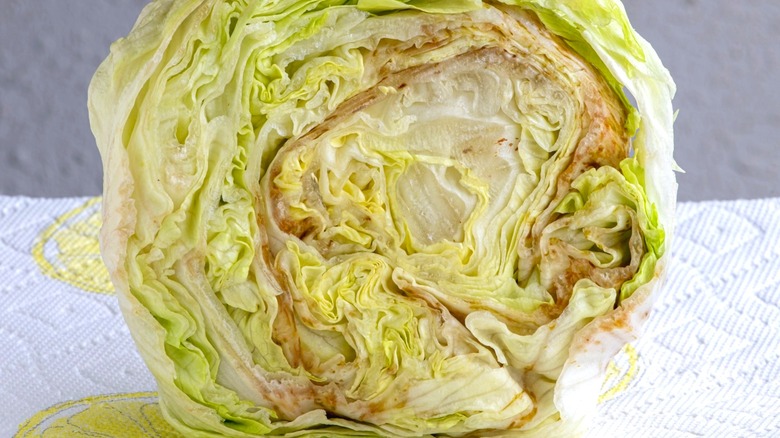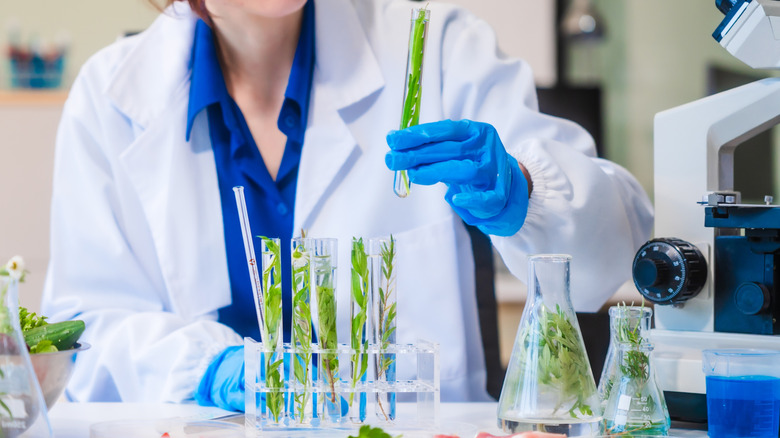The Common Kitchen Item That Can Prevent Your Lettuce From Turning Brown
We may receive a commission on purchases made from links.
There's nothing worse than using lettuce for a sandwich or salad, storing the rest in the fridge for later, and removing it a few days afterward to find that most of the leaves are turning brown. Sure, you might be able to save some of it, but it may not be the most appetizing by that point. Fortunately, one of the most common items in your kitchen can hinder the browning process and prolong the freshness of your leafy greens: paper towels.
How do paper towels make lettuce stay good for longer? It's all because of how paper towels absorb excess condensation. While lettuce needs moisture to stay crisp and fresh, too much moisture has the opposite effect, making it spoil and turn brown faster. However, this leafy green releases moisture as it cools after you put it in the fridge. Storing the lettuce with paper towels ensures that the extra moisture is soaked up, preventing it from sitting on the leaves and accelerating spoilage. Of course, you should also wash the leaves and allow them to dry fully before you place them in the paper towel-lined container. You could even skip the container altogether: Just line your crisper drawer with paper towels, and store the lettuce in it. Just replace the towels with new ones every few days or when they start to feel soggy.
Consider making it a sort of science fair project on paper towels by refrigerating some lettuce with paper towels, and some in a separate container without. Then, you can compare the shelf life yourself.
The science behind why lettuce turns brown
Interestingly, the browning process in lettuce is a sign that a chemical change is occurring, just like the oxidation and enzyme activity in apples. This process is called enzymatic browning, and it's a reaction to tissues of the plant being cut and exposed to oxygen. Because of that exposure, an enzyme called polyphenol oxidase triggers the oxidation of polyphenols that creates benzoquinone and other chemicals. When those chemicals come into contact with amino acids, dark pigments are produced.
The lettuce stem undergoes a similar browning process when it's cut during harvesting. In a study published in Food Chemistry, researchers investigated the mechanism behind browning and found that fluid and latex from the cut cells were the primary culprits. These lead to a cascade of other chemical changes that further contribute to the browning.
Fortunately, keeping lettuce cold slows down the enzyme activity that triggers the chemical reaction that leads to browning. That's because enzymes are proteins that vibrate, and cold temperatures slow down those vibrations. So, by combining cold temperatures with paper towel-lined storage, lettuce can last well beyond just a few days before the browning process is visually noticeable.

